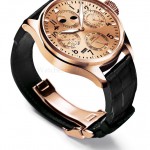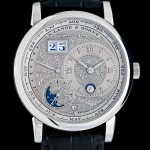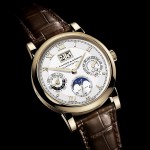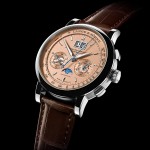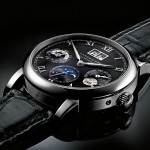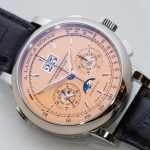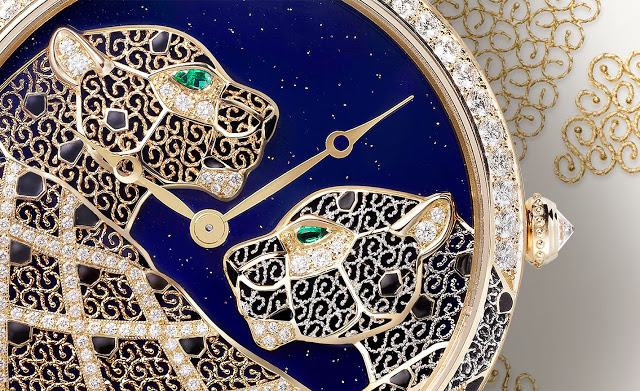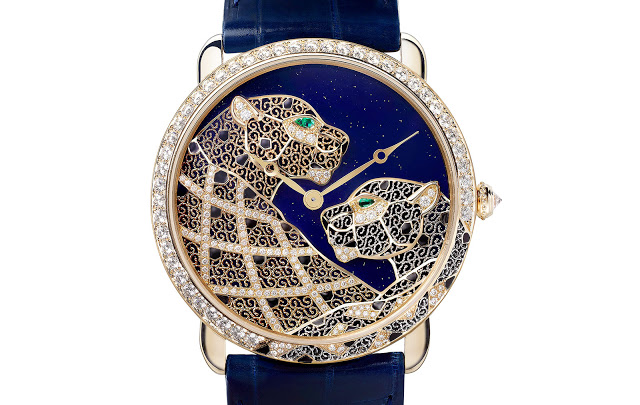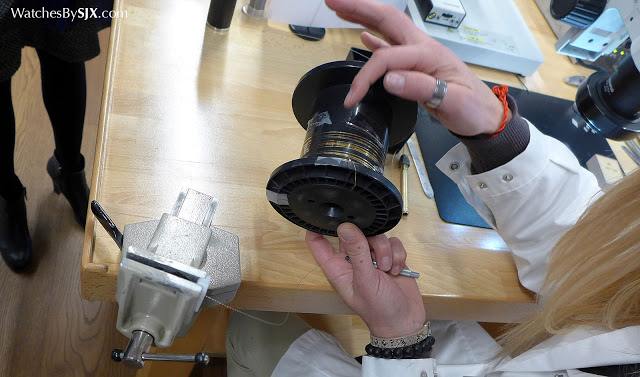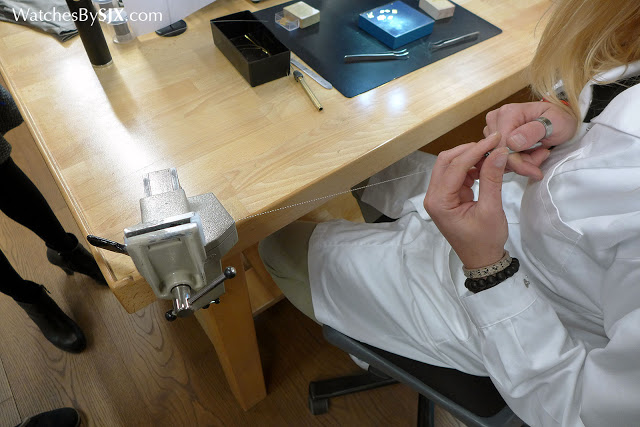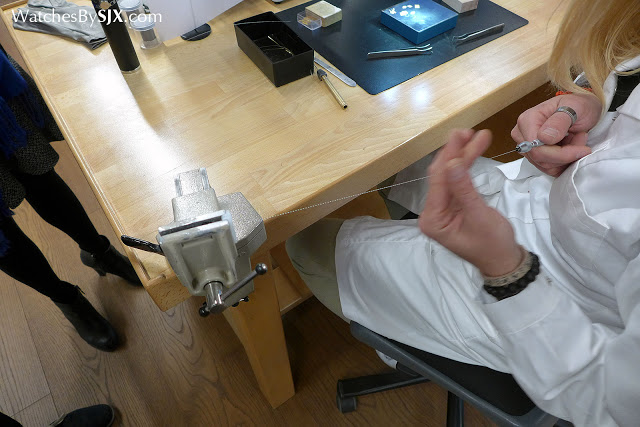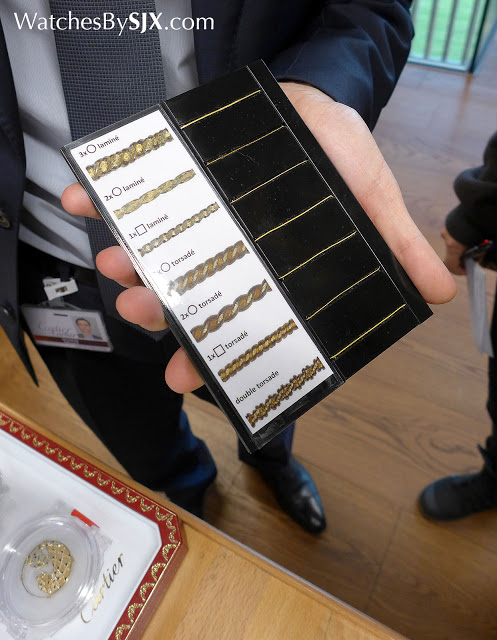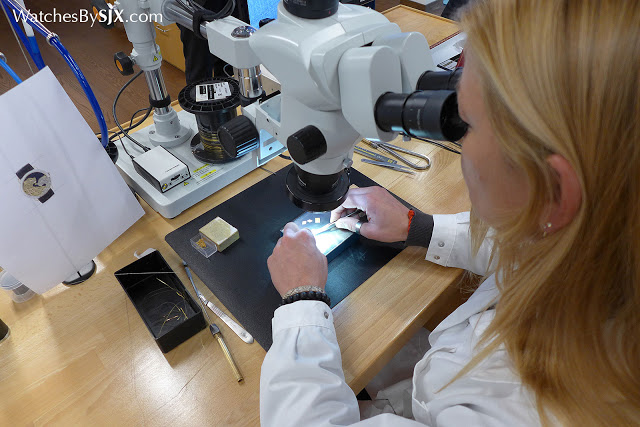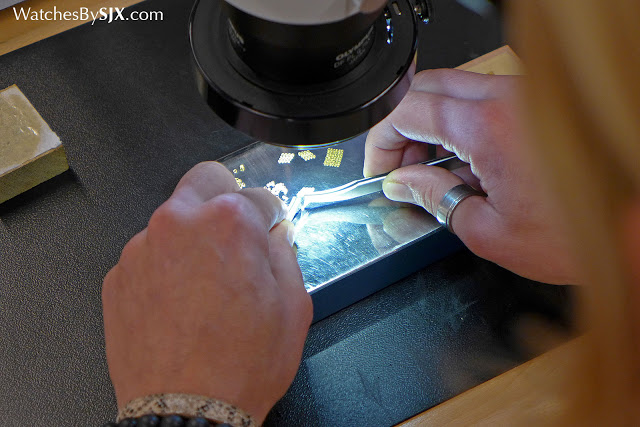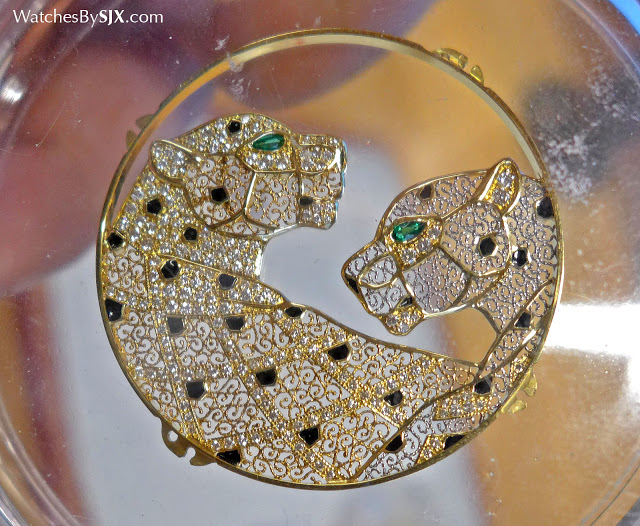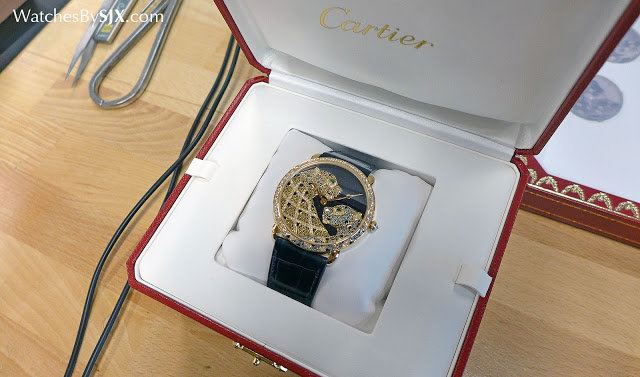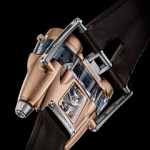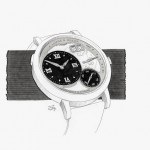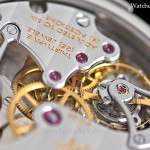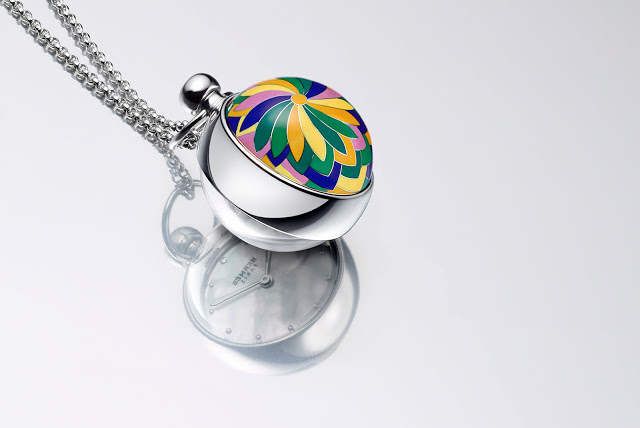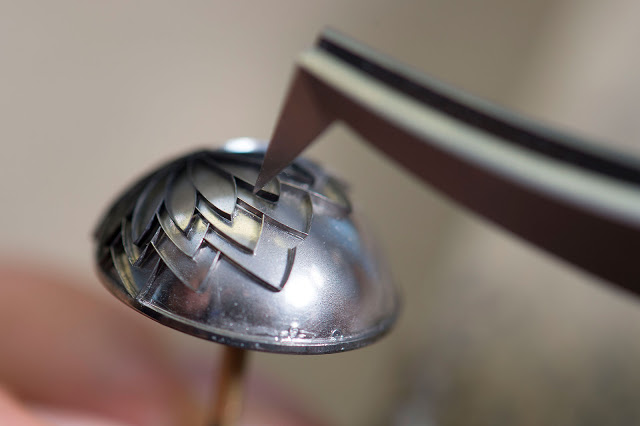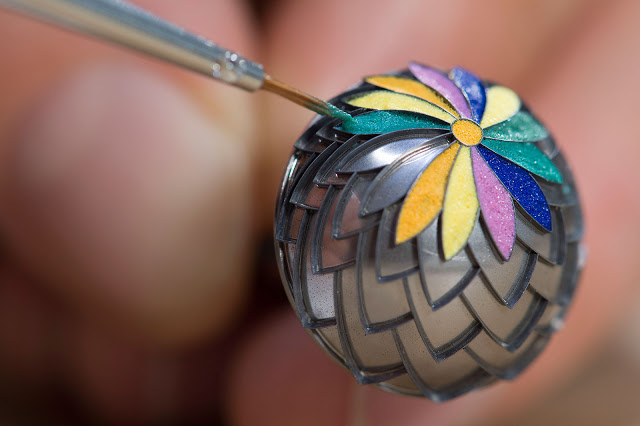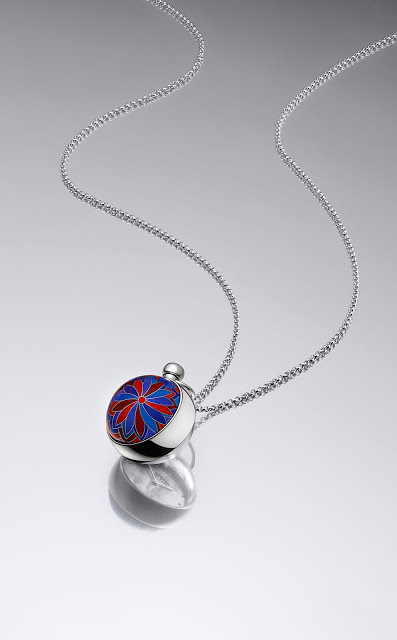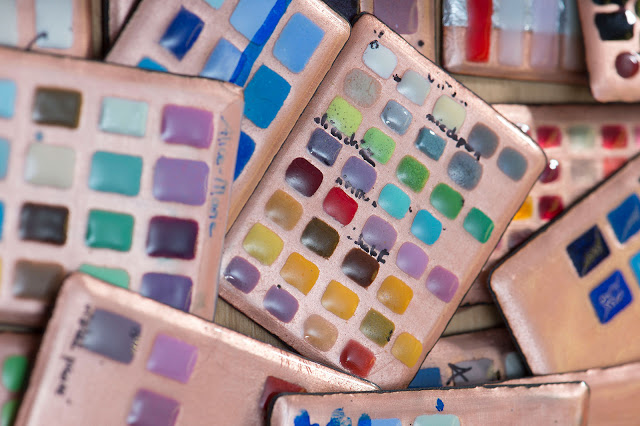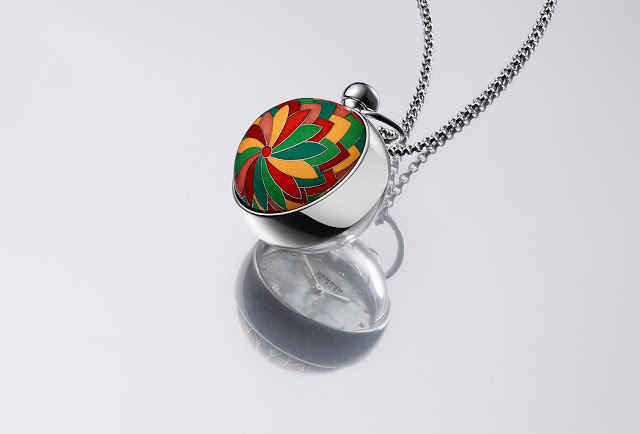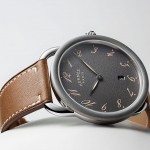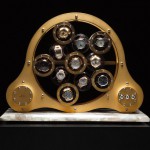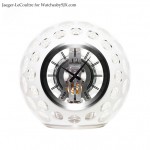Up Close with the Lange Datograph Perpetual in White Gold, with the Face-Lifted Grey Dial (with Pricing)
Distinguished by its cleaner, more contemporary dial, the face-lifted Lange Datograph Perpetual in white gold nonetheless looks and feels much like the first generation model, with the same gorgeous movement.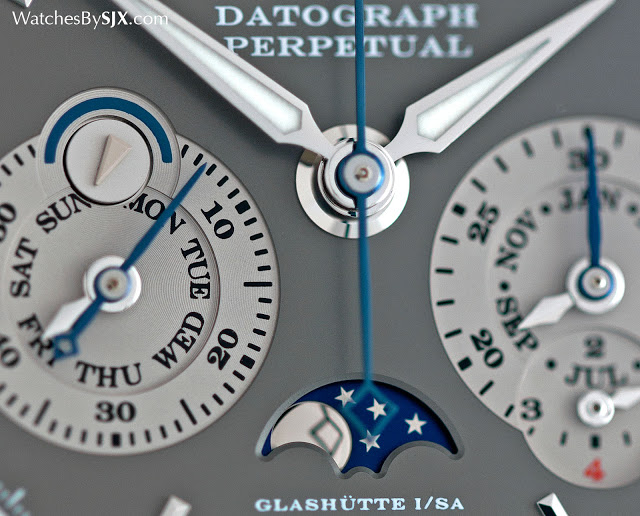
The first generation Datograph Perpetual in white gold (ref. 410.030) was produced briefly from 2009 to 2011, with perhaps less than 100 were made. That short-lived but attractive combination of white gold case and grey dial was revived earlier this year with the face-lifted Datograph Perpetual in white gold (ref. 410.038). In recent years A. Lange & Söhne has face-lifted its Datograph, most recently with the new pink gold, Up/Down model. The same just has just been done to the new Datograph Perpetua.
Lange has a clear design code for each of its lines, with Arabic numerals for the 1815 and Romans for the Lange 1. The Saxonia is the simplest, with baton indices for the hours. And because the Datograph line is now part of the Saxonia (sort of), all its constituents watches feature that clean, modern aesthetic.
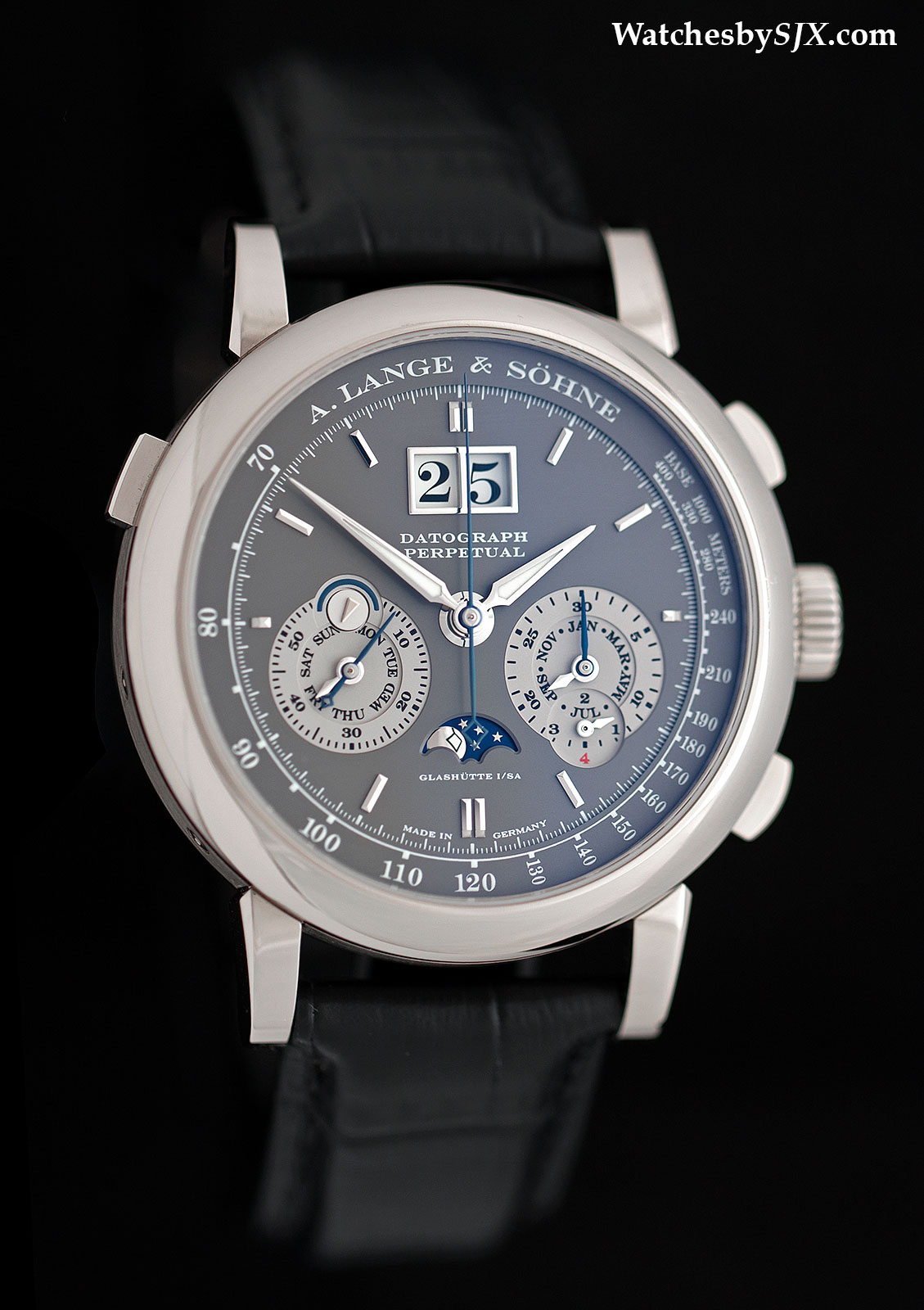
The new Datograph Perpetual features a new dial that has been tweaked in a subtle manner, so much so that it looks almost the same as the old dial from a distance. The most obvious change is the removal of the Roman numerals; now all the indices are baton markers.
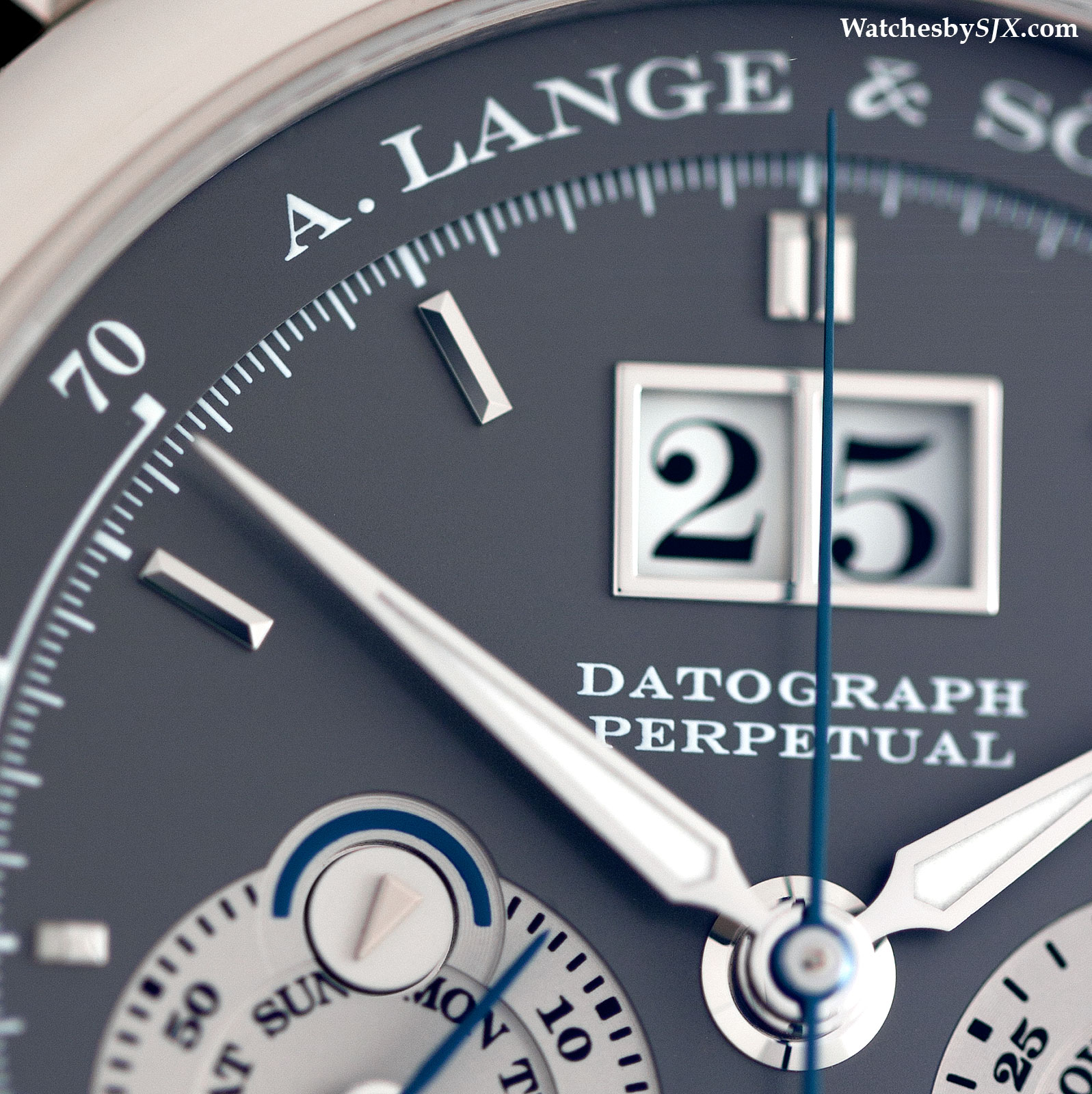
Five minute markers on the outer edge of the dial have also been removed, enhancing the clean look. And “Glashütte I/SA” is now printed just below the moon phase, short for “Glashütte in Sachsen”.
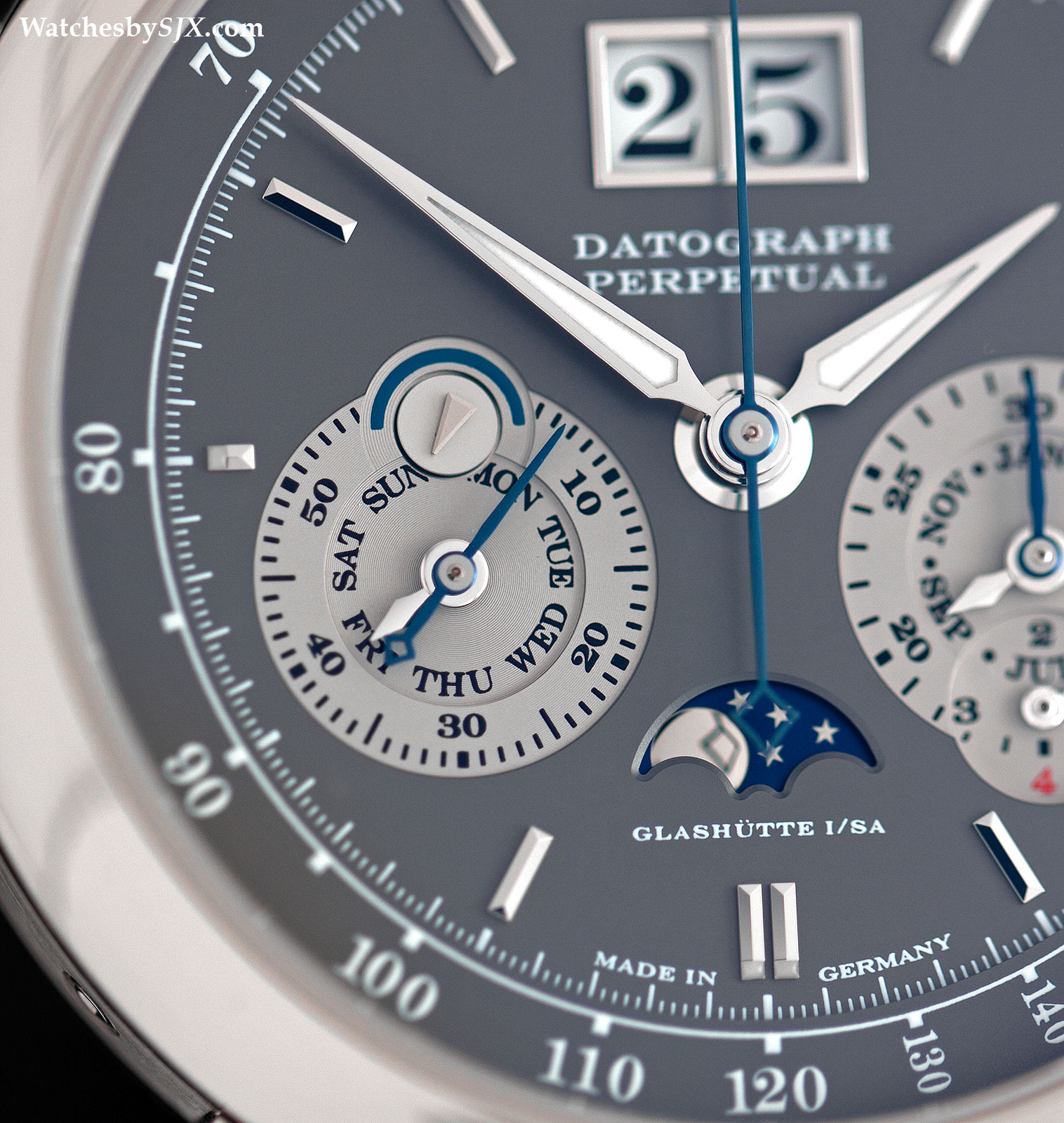 |
| The constant seconds, day of the week and power reserve indicator are on the left sub-dial |
The rest of the dial remains unchanged, and so still possesses the shortcomings of the first generation model. Each of the two sub-dials packs in three different indicators, while the moon phase is tiny, almost like it’s trying to hide itself. Though the new dial is cleaner, the Datograph Perpetual still lacks the legibility of the equivalent model from Patek Philippe, the ref. 5270.
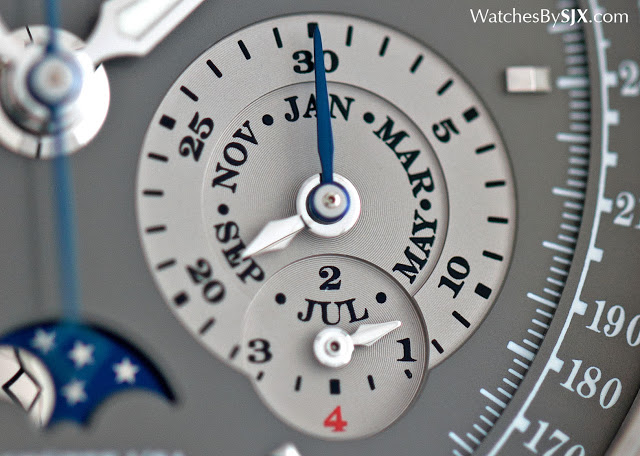 |
| A close-up of the minute counter (on the outermost ring), month and leap year indicator (at the bottom) |
Fortunately the view from the back makes almost everything forgivable. It’s equipped with the calibre L952.1, a movement based on the original Datograph calibre L951.1. The movement is a joy to look at.
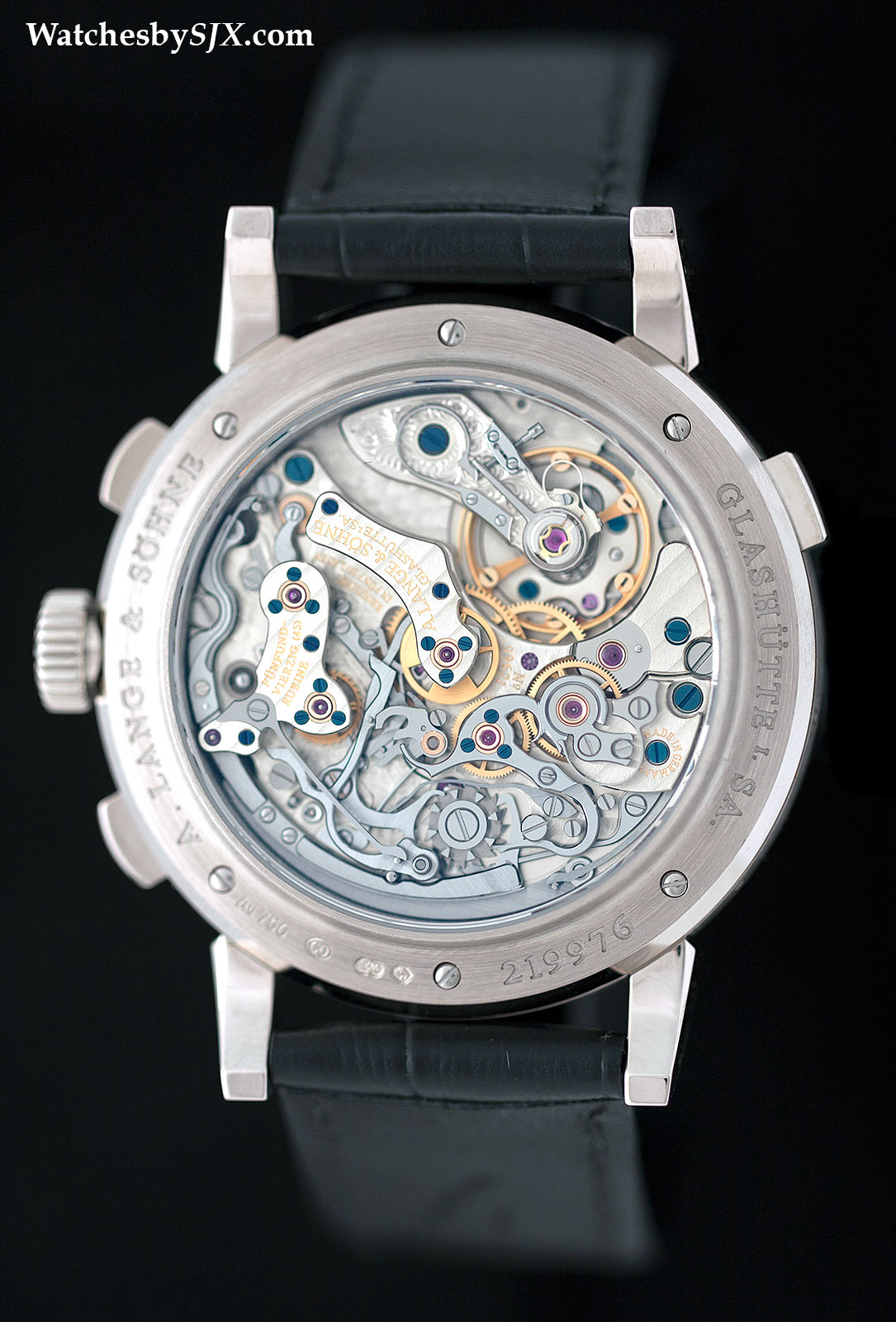
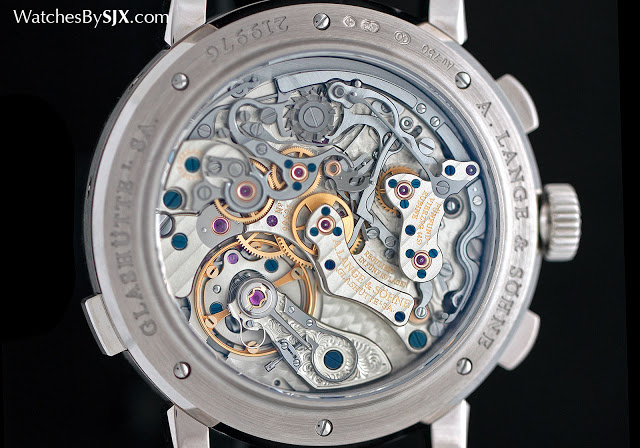
It features Lange’s in-house, adjustable mass balance but unlike the current Datograph Up/Down movement, it lacks the upgraded mainspring and extended power reserve. That means the Datograph Perpetual runs for a brief 36 hours when fully wound, somewhat of a detriment for a perpetual calendar which requires effort to set once it’s stopped.
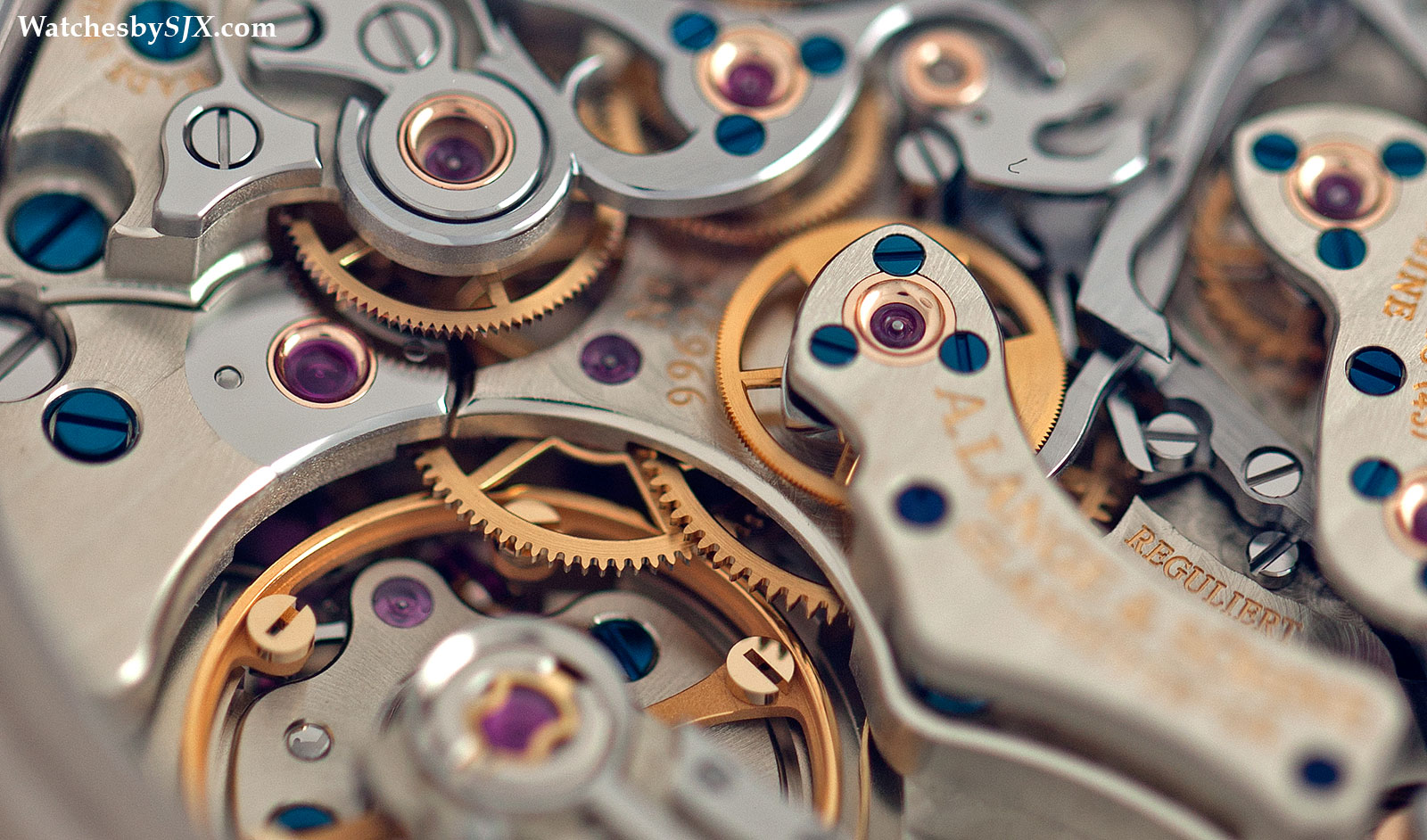
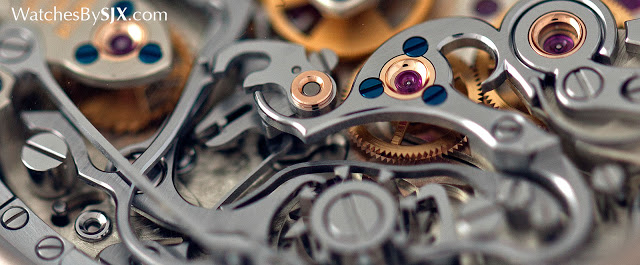 |
| The black polished chronograph levers |
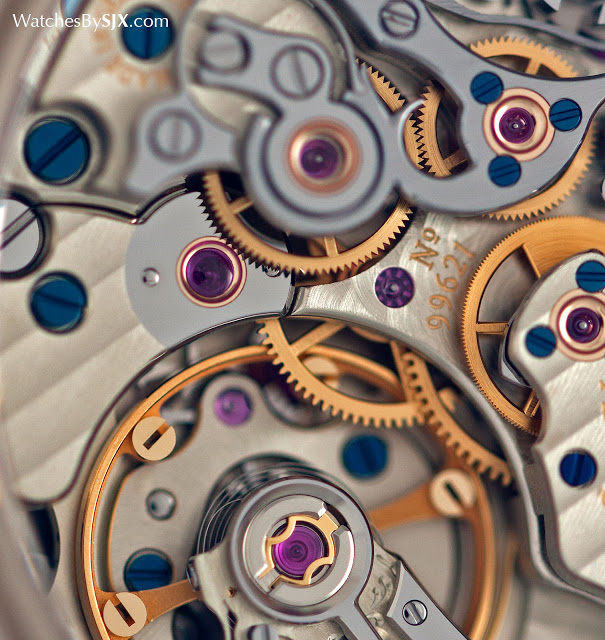
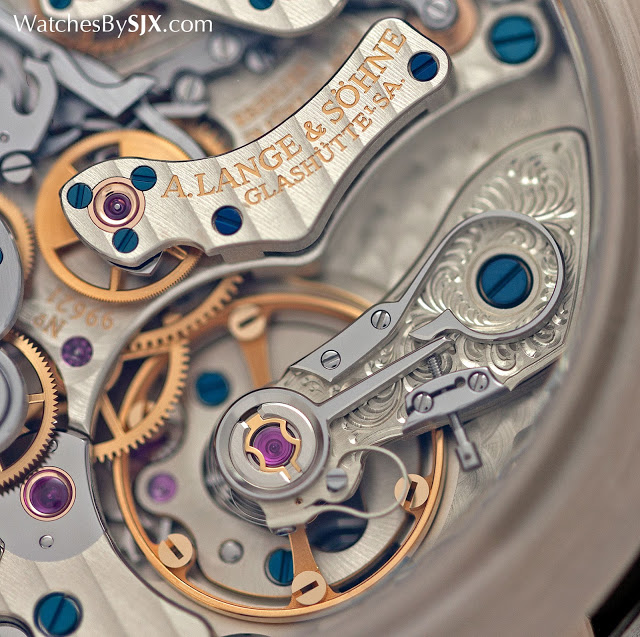 |
| The hand-engraved balance cock, a signature feature of Lange movements |
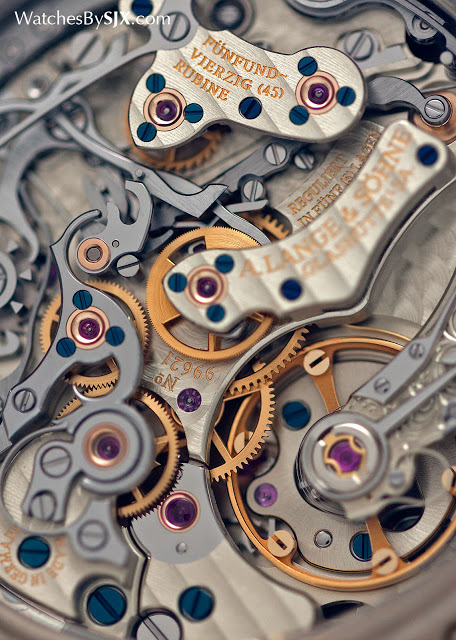
The Datograph Perpetual in white gold costs €119,000 or US$137,800.
Back to top.
